WHAT IS THERAPY AND WHAT DOES LOVE HAVE TO DO WITH IT?
Tom Vogel recently wrote about St. Kate’s English professor, Geri Chavis, and the classes she teaches which focus on “therapy” (MinnPost.com, August 17, 2009 http://www.minnpost.com/from_our_partners/2009/08/17/10869/university_of_st_catherine_st_kates_engli). Chavis’ work interests me because I believe writing saves lives. Karim Khan, book reviewer, claims, In several poems, Lee points to the therapeutic effect of writing as a life-saving habit
( https://blog.sherryquanlee.com/2009/08/ernest-dempsey-reviews-how-to/ ). When I was interviewed by Karim Khan, I had the opportunity to express my thoughts about “therapy” (http://www.bookpleasures.com/websitepublisher/articles/941/1/Meet-Sherry-Quan-Lee-Author-of-How-to-Write-a-Suicide-Note-serial-essays-that-saved-a-womans-life-Reflections-of-America/Page1.html):
Ernest:
For you, and some other writers including myself, writing saves lives. And How to Write a Suicide Note is persistent on this point. One poem in the book specifically indicates [Because] Writing Saves Lives. Since you also teach writing, did you ever include writing as therapy in your lessons?
Sherry:
I taught a workshop Writing to Save Your Life, an interdisciplinary workshop for Women of Color. Some of the students from that workshop continue to write and share their stories. One of the students later taught a similar workshop, and she and another writer in her workshop (which I co-facilitated) are now managing the blog I started in conjunction with the first workshop! So, yes, in my classes, I introduce my belief that writing can save lives. However, writing as ‘therapy’ connotes something different for me: it conjures a feeling that we need to be fixed. Instead, isn’t it the world that needs to be fixed? We must keep ourselves alive! Keep our stories alive! So together we can make a difference. I believe writing can be a necessary part of therapy, but therapy needs to be facilitated by professionals. While there are professional art therapists—I am not one.
There are many women of color writers who have saved my life. Their stories familiar-the anger, the pain, the confusion, the loneliness, the abuse, the struggle, the triumph, the beauty, the passion, the creativity, and the love. I use the work of other writers such as Jungian therapist Clarissa Pinkola Estés as well as my own writing, as writing prompts. I encourage students to write the often very difficult stories that allow them to let go of what needs to be let go of, in order to keep going! Here’s a quote from Estés that I find inspiring:
“Creativity is not a solitary movement. That is its power. Whatever is touched by it, whoever hears it, sees it, senses it, knows it, is fed. That is why beholding someone else’s creative word, image, idea, fills us up, inspires us to our own creative work. A single creative act has the potential to feed a continent. One creative act can cause a torrent to break through stone”? (Women Who Run With Wolves, Ballantine Books, 1992, page 299)
I will never forget the angel I met at a Split Rock writing workshop. After introductions and at the end of the class she came up to me and asked if I was the Sherry Quan Lee that had read at the Loft some seven or eight years before. She went on to recite some lines from my poems! We might never know when we have touched someone’s life with our words, but our words can be transformative! I keep some of the letters and notes from people whose lives I have touched. It is not narcissistic. It’s what I return to when I wonder what my purpose in life is. When I wonder if my life/my writing matters. When I’m feeling low down. The kind words others have written to me save my life time and time again.
In Shay Youngblood’s Black Girl in Paris (Riverhead, 2000), Eden says:
“…and between my tears words began to bloom on the page, one after the other. Words crowded each other, trying to lead me out of despair. I was exuberant. The maps I’d made were guides to my interior. I remembered all the places I’d been, all the things I’d seen, and I caught them in my imagination. Jimmy was with me and Langston too. I wrote to understand where I had been, where I was going, to make sense of the world that had led me to the small room on the edge of the abyss.”
Writing by colorful women writers has kept me alive, along with my own writing. Writers like Audrey Lorde, Joy Harjo, Evelina Galang, Toi Derricotte, Nikki Giovanni, Cherrie Moraga, Gloria Anzaldúa, Wang Ping, Linda Hogan, Theresa Hak Kyung Cha, Eden Torres, bell hooks, Maxine Hong Kingston, Alice Walker, Toni Morrison, Ana Castillo, and others have given me the courage to discover who I am as I continue to map my life through writing.
………………
English professor, Chavis, according to the article, is a board member of the National Association for Poetry Therapy. My understanding, from Vogel’s article, is Chavis uses literature as the basis for therapy—stories and poems that students might connect with. But it isn’t clear that she uses students’ own stories and poems.
I believe writing our personal stories is the path to understanding, to making sense, and even to changing our life’s direction. That said, what we write could be the story or poem that Chavis uses in her class at St. Catherine University in one of her therapy literature courses! Chavis uses reading and discussion, but no place in the article is the act/the art of writing mentioned. She said reading builds self esteem. How can one disagree? However I would fervently add, reading can’t happen without writing. When I teach classes, both reading and writing are emphasized, the heavier emphasis being on the writing. I also have taught at St. Catherine University. I taught Creative Writing to healthcare students—a requirement at St. Kate’s. I used literature such as The Diving Bell and the Butterfly by Jean-Dominique Bauby, and The House on Mango Street by Sandra Cisneros, as examples, but we focused on the students’ stories.
I am, after my writing is finished and ready to go public, thrilled when I read what someone else has written that says basically what I have said, but said differently. The great aha, twice, or thrice! It’s all been said before, I’ve been told. When I finished writing How to Write a Suicide Note serial essays that saved a woman’s life, I discovered my theme of getting rid of/killing off what is keeping me from living, so I can live, was a similar theme in Charissa Pinkola Estés’ book, Women Who Run With Wolves (a must read, by the way, for those of us who sometimes let creativity slip by the wayside for a myriad of reasons). I wasn’t distraught that, oh darn, I have just written and published something not original; instead, I was thrilled that what I had discovered for me, had previously been discovered/or uncovered by someone else!
I am not sure reading literature could have literally saved my life the way my life was saved by my own writing (what makes something that has been written, literature?). I wrote a suicide note, once, to my adult children. As always, when I write something new, I read and reread it and reread it to make sense of it, to make it better–or, in this case, perhaps, to linger. I believe the note kept me from dying. It spoke to me. It challenged me. Death by my own hand wasn’t the legacy I wanted to leave my grown sons, nor was the suicide note. And thank God because life, the birth of two incredible grandsons, is the gift I have recently been given. Not to be overly sentimental, but I do believe writing saves lives. (Again, I am not a therapist and my suicide attempts were not from a clinically diagnosed depression. I react. Sometimes I overreact. I am feather hitting stone.) Check out this entry from the Women of Color blog, October 2007, by me:
http://blog.lib.umn.edu/leexx065/writingmulticulturalidentity/
Stories that Save Lives
Leslie Marmon Silko in “The Storyteller’s Escape” (STORYTELLER, Seaver Books, 1981) wrote, “The storyteller keeps the stories / all the escape stories / she says ‘With these stories of ours / we can escape almost anything / with these stories we will survive.”
As a writer I often wonder if my writing gets better as my life gets better or if my life gets better as my writing gets better. I do know that I have been writing about identity for almost thirty years and the writing and the life depend on each other.
Gloria Anzaldua wrote in THIS BRIDGE CALLED MY BACK, “I write to record what others erase when I speak, to rewrite the stories others have miswritten about me, about you.”
I started writing about identity when I went to a feminist bookstore and realized there were no books about me, a mixed race woman, Black and Chinese. I wrote poem after poem which eventually became a chapbook, A LITTLE MIXED UP, published by Guild Press in the early 80s.
I write because I have to. If I didn’t write the silence would be unbearable. There would be no place for the anger, the pain, the loneliness to disappear. If I didn’t write love wouldn’t be possible.
Love is the essence of the mapping of who I am. My curriculum vitae is a map of my journey towards a holistic life. each line on my cv a blessing and a hope. I have other maps. My chapbook, A LITTLE MIXED UP; my memoir in verse, CHINESE BLACKBIRD published by Asian American Renaissance in 2002; and my almost completed manuscript, HOW TO WRITE A SUICIDE NOTE: serial essays that saved a woman’s life. Each map embraces all of who I am integrating race, class, gender, age, etc. into my stories.
Eden says in BLACK GIRL IN PARIS by Shay Youngblood, “…and between my tears words began to bloom on the page, one after the other. Words crowded each other, trying to lead me out of despair. I was exuberant. The maps I’d made were guides to my interior. I remembered all the places I’d been, all the things I’d seen, and I caught them in my imagination. Jimmy was with me and Langston too. I wrote to understand where I had been, where I was going, to make sense of the world that had led me to the small room on the edge of the abyss.”
Writing by colorful women writers has kept me alive, along with my own writing. Writers like Audrey Lorde, Joy Harjo, Evelina Galang, Toi Derricotte, Nikki Giovanni, Cherrie Moraga, Gloria Anzaldua, Wang Ping, Linda Hogan, Theresa Hak Kyung Cha, Eden Torres, bell hooks, Maxine Hong Kingston, Alice Walker, Toni Morrison, Ana Castillo, etc., etc. etc. have given me the courage to discover who I am as I continue to map my life through writing.
http://www.tc.umn.edu/~leexx065/recommend.html
What is therapy? How does literature cure/cure what/cure who? What ails us, what ails the world? I read and I write, both help me survive; and I pray that in some small way, I have contributed to the healthiness of a nation/of a world.
First draft/another love poem:
What is therapy and what does it have to do with love?
Exercise. Walking. Running. Biking. Swimming. Eating. Not eating. Bowling. Dancing. Yes, dancing. Doing. Not doing. Dreaming…..Delving. Monkey mind. The art of writing. Words. Stories. My stories. Music. Rhythm. Melody. Repetition. The Amen. The Hallelujah. The exclamation. Travelling. Ranting. Beatitudes. Beckoning. Forever. Living. Your stories. Poetry. Compassion.
Sherry Quan Lee
September 1, 2009
Comments welcome? How has writing saved your life? How have other writers’ stories saved your life? What works of literature do you recommend?



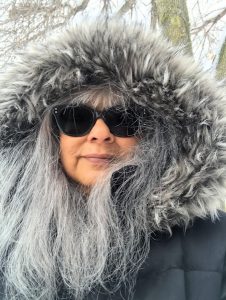

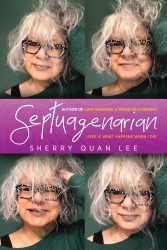
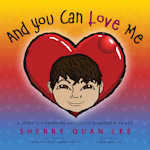
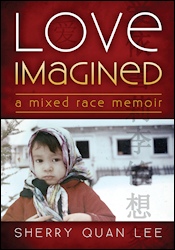
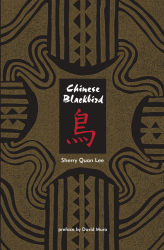
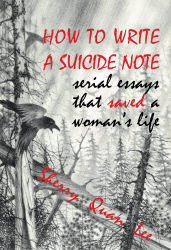

Thank you Geri, I am glad you noticed the post and good to know your process includes both reading and writing/and discussion. I am very interested in your work, do you have a book or other articles that might be of interest?
I will be co/teaching a workshop Saturday, Sept. 26th and we will be discussing “bookmaking” as healing.
Sherry
Dear Sherry,
I very much enjoyed reading your comments and wanted to clarify that for me and my colleagues in the National Association for Poetry Therapy, writing our own stories and finding our own images is a vital, crucial part of the work. The reading and writing processes often are interwoven. I regret that the article did not focus on the writing aspect of my work along with the reading of choice materials.
Sincere regards,
Geri Chavis